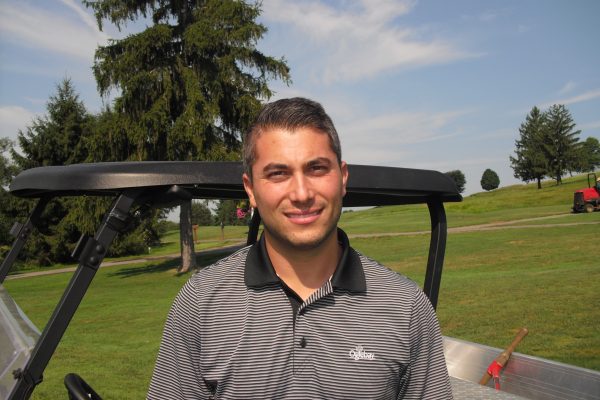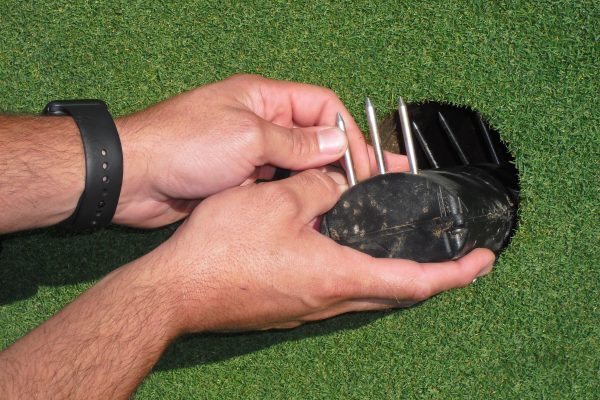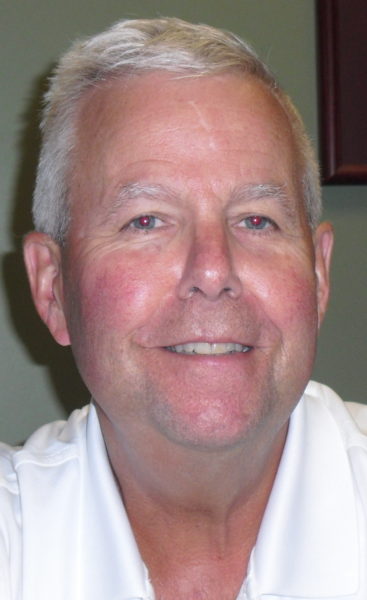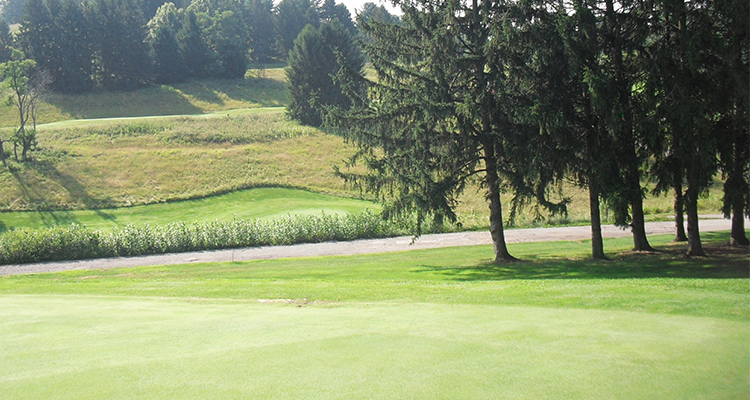 As part of a continuing series on how Wheeling is greening up, Weelunk looks today at the non-profit sector. Area readers are likely familiar with Oglebay’s full-scale switch to LED bulbs for the annual Festival of Lights — a move that has reduced event electricity use by 30-40 percent. Administrators say the park’s commitment to sustainability runs much deeper, even to its golf courses. Here is a quick look at how Oglebay is making its greens greener and why.
As part of a continuing series on how Wheeling is greening up, Weelunk looks today at the non-profit sector. Area readers are likely familiar with Oglebay’s full-scale switch to LED bulbs for the annual Festival of Lights — a move that has reduced event electricity use by 30-40 percent. Administrators say the park’s commitment to sustainability runs much deeper, even to its golf courses. Here is a quick look at how Oglebay is making its greens greener and why.
Wherever Nick Janovich steps on the golf-course green, damp footprints are left behind. The previous day’s gully washer has made things obviously wet. But, “wet” isn’t nearly good enough.

He plunges a specialized post-hole digger into the soil and removes a plug of earth with a quick yank. The sensor he drops in before tidying up turf as short-pile as velvet will tell him way, way more.
Specifically, the course superintendent for Oglebay Resort and Conference Center will know exactly how wet, how salty and how warm two layers of the soil is. Every five minutes, such data will flit wirelessly to his cell phone and computer from, not just this sensor, but another 599 buried throughout the 600 acres that comprise the Robert Trent Jones and Arnold Palmer courses.
“We’re as green as we can be,” Janovich said, referring not to the desired emerald hue of turf but to a park commitment to balance a love of the game with sustainability.
“There’s this terrible notion that we’re throwing pesticides everywhere and we dump stuff in ponds — and that’s just not true,” he said of how Oglebay is at the leading edge of green golfing. “We have to pay for that stuff.”

That fact — that serious money can be saved by being eco-green — is what makes the Wheeling Jesuit MBA believe sustainability is more than a passing trend for the golf industry. “It’s not bad business.”
Data Driven
Since installing the soil sensors five years ago — in lieu of rolling test plugs of soil between the fingers to check for moisture — course water use is down 15 percent, he said. Since the course pays for municipal water instead of tapping on-site ponds, that adds up.
“When we are irrigating, it is exactly to the 100th of an inch (of water),” he said. “It’s so important for us to make sure every drop we’re putting out there is actually needed and it’s a decision based on data.”
Interestingly, the sensors have combined with other high-tech practices like using GPS systems sensitive to the inch to direct spraying to cause a comparable drop in chemical use, as well, he said. Turf that isn’t stressed by too much or not enough water simply doesn’t need as much fungicide and pesticide, Janovich explained.
The new way of doing things isn’t always computer-driven, Janovich added. Thanks to an assist from Penn State, the course now uses field-biology techniques to monitor insects such as the annual blue grass weevil, which can wreak havoc on turf. Soapy water flushes and other sampling now determines the timing of insecticide application.
“We know when that weevil is emerging, and we can treat once for it, (instead of guessing and treating two or three times, as was done in the past),” Janovich said, noting he shares such information with other area courses so they can do the same. “We don’t want to be out there spraying insecticide all over the turf. It requires a little more work (to monitor), but it’s better for everyone and it’s cheaper.”
Another lower-tech way to green up has been to let some grass grow up. While grass on greens is a mere one-eighth inch long and a half inch on fairways, things get pretty wild in naturalized areas around water features such as ponds. These tall grasses, which include plenty of butterfly-pleasing milkweed, are pretty, but they also help prevent chemicals and fertilizers from contaminating the ponds during rains, he said.
Janovich shrugs, mentioning golfers do complain when they lose a $5 ball in tall grasses, but said he does his best to place them where shots are less likely to go astray. This is something the bluebirds likely appreciate. The naturalized areas contain nesting boxes that serve dual purpose — housing birds and marking key infrastructure like valves, which might otherwise be as hard to find as one of those pricey balls.
“Drone imagery is the next step,” said the Shadyside, Ohio, native, who is so enthusiastic on the subject he writes about it for trade magazines and does speaking engagements. He said the drones will probably be taking thermal images of turf within two years, giving an even faster read on when turf is going into stress.
The Color of Money
Curt Byrum, chief of Oglebay’s physical plant, said what’s happening on the golf courses is typical of the park’s overall direction. He agreed with Janovich that eco-green has a close association with cash-green, but not necessarily in the same way it plays out on the links.

Instead of saving money by using less of something, the overall park sometimes spends a bit more on things like replacing infrastructure with more sustainable models. The economic gain comes from increased revenue, much of it driven by the numerous land-management schools Oglebay hosts throughout the year. Some of them book all of Wilson Lodge and half of the park’s cottages, Byrum said.
“They expect to see that in us,” he said of school attendees and individual eco-savvy visitors being able to charge up a Tesla, get a massage with toxin-free products, flush a toilet with three liters of water, or ride a horse whose bedding is a mix of straw and shredded office paper that will later be composted.
The link between how Oglebay operates and what it can teach has become so strong, the revival of a national-level sustainability school is in the works. The program, unique in the United States, will bring workers from parks, aquariums and zoos to Oglebay to learn best-use practices first hand, he said.
(Photos by Nora Edinger)
• Nora Edinger writes from Wheeling, W.Va., where she is part of a three-generation, two-species household. A long-time journalist, she now writes in a variety of print and e-venues, including her JOY Journal blog at noraedinger.com. Her first work of fiction, a Christian beach read called “Dune Girl,” is available on Amazon Kindle.



